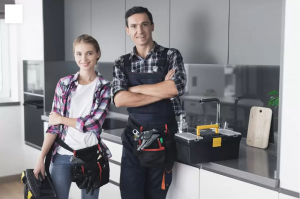- What is a Smart Home in 2025?
A smart home in 2025 transcends simple automation; it represents a connected ecosystem of devices, sensors, and systems designed to provide convenience, security, and energy efficiency. From voice-controlled lighting and climate systems to AI-powered surveillance and automated appliances, smart homes aim to offer a personalized living experience.
Some key features of smart homes in 2025 include: -
Voice and App-Controlled Devices
Smart Lighting and Climate Control
Automated Security and Surveillance
Energy Management Systems
Smart Kitchens and Appliances
Integrated Vastu Design with Smart Technology - Integration of Vastu Shastra in Smart Homes
As vastu experts in East Delhi, we have observed a growing trend of incorporating traditional vastu principles with modern smart home technologies. This integration ensures that homes equipped with cutting-edge technology remain aligned with ancient architectural wisdom that promotes harmony and prosperity.
For example: - Smart lighting is aligned with the natural directions of sunlight. -
Energy-efficient zones are established according to Vastu recommendations. -
Electronic placements are strategically located to avoid interference with Vastu zones. This blend appeals to real estate buyers who seek both spiritual balance and tech-forward convenience. * - Why East Delhi Homebuyers Are Choosing Smart Homes
East Delhi is experiencing a surge in demand for high-end residential apartments priced around ₹6 crore and above. Today's homebuyers, particularly those over 30 years old, are well-informed and prioritize a combination of comfort, technology, Vastu compliance, and sustainability. Key factors driving this trend include: -
Security: AI-powered CCTV, biometric access, and smart door locks provide 24/7 security. Energy Efficiency: Solar panels, motion-sensor lights, and climate control save on energy costs. Convenience: Everything from curtains to coffee machines can be automated or controlled remotely. Property Value: Smart homes have a higher resale value and appeal to forward-thinking investors - Sustainable Smart Living: A Growing Priority.
By 2025, sustainability will have become a priority rather than an option. Builders and real estate developers are now incorporating green building materials, rainwater harvesting systems, and energy-efficient designs into smart homes. These features attract environmentally conscious buyers who are looking for long-term value and a reduced carbon footprint. Additionally, smart homes utilize data analytics to monitor energy consumption, water usage, and appliance efficiency, making them increasingly sustainable over time.
InsertMake it persuasive





